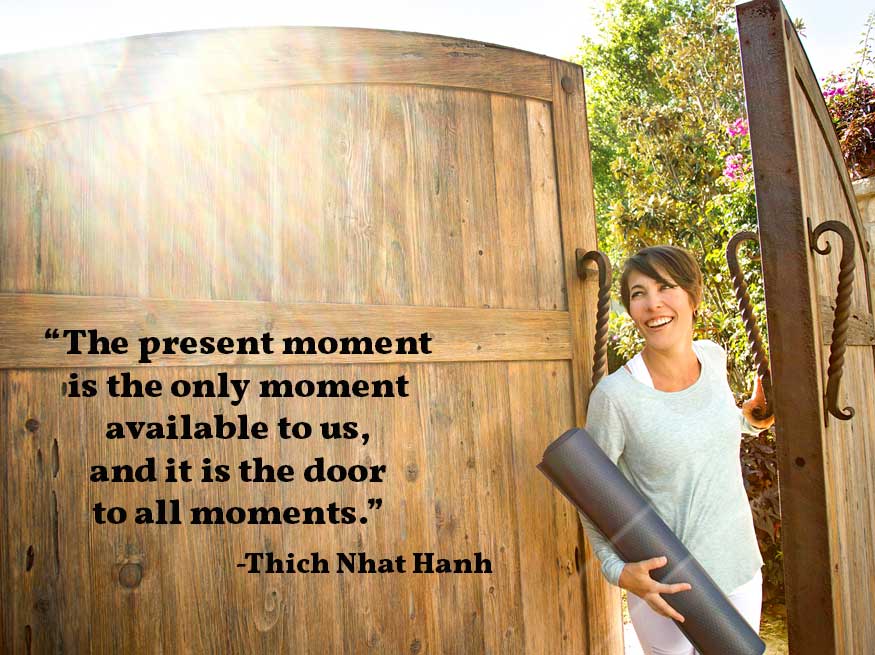 Business is about relationships, then the success of those relationships relies heavily on the clear communication between all parties. With the growth of an internet era, it can be easy to forget that many of the same principles we would use in face-to-fact encounters are also those you want to use when connecting online. This article is the first is a series of posts that will address the foundations of communication, and how you can use your enhanced skills in the area of communication to build lasting relationships that support your business.
Business is about relationships, then the success of those relationships relies heavily on the clear communication between all parties. With the growth of an internet era, it can be easy to forget that many of the same principles we would use in face-to-fact encounters are also those you want to use when connecting online. This article is the first is a series of posts that will address the foundations of communication, and how you can use your enhanced skills in the area of communication to build lasting relationships that support your business.
This idea is at the forefront of my mind due to a recent interaction I had with a clothing company. This particular brand reached out to me via Instagram with the intention of garnering me as a representative in the yoga field. They requested I send them a text message directly for more information.
I followed instructions and sent a text to the CEO of their growing line. After a brief text, I requested we speak via email or phone to discuss more details. I only received a very long text in response. Over the course of a week, I had time to verify their company website and branding message to see if they were a company with which I’d want to align.
When I reached out to the CEO again, I had a few more questions. Unfortunately, those specific questions were met with very canned responses. It was like watching a politician effortlessly pivot from a question asked by a reporter to a topic they would prefer to talk about instead. This break in communication halted the relationship before it even had a chance to flourish.
Clear communication is one of many leadership traits that sets successful business owners apart from the crowd. You can continue your own success by refining your skills in this area.
Photo Credit: Harli Martin
CLEAR COMMUNICATION
Communication is a necessary part of life. At its most basic level, communication is an exchange of information between individuals or groups that involves both speaking and listening. When these ideas are expressed with clarity, and when you feel heard by another person, a host of positive outcomes can arise. Clear communication leads to:
- Personal satisfaction and meaning
- Increased harmony in a group
- Positive first impressions
- Enhanced collaboration
- Resolutions when problems arise
- Increased efficiency
- Amplified trust
- Increased marketability
- Rise in company profits
THE COMMUNICATION PROCESS
In order to identify where your communication strengths and weaknesses occur, it’s essential to first understand the communication process. Much of the information below might seem like common sense. Yet, common sense is not always common practice.
Pause for a moment. Ask yourself, When did I last have a misunderstanding with someone else? Do I know what part of the communication process caused it?
When you’re teaching a yoga class and you instruct the students to move into the next pose, many times you watch the sea of students move easily toward that next posture. But, like me, have you ever mixed up your right and left when cueing and then watched the look of confusion overtake the room?
In that instance, you get immediate feedback that the words spoken didn’t register with your students. Essentially, there was a breakdown in the verbal message you were sending.
Other times, though, communication with other instructors, studio owners, and businesses can have more subtle misinterpretations. Take a look at the five steps of the communication process below to discover any lapses in your own skill set. You will also be able to recognize any missteps by others, and be able to redirect a conversation back toward clarity should you want to continue building a relationship with the person, or group, in front of you.

STEP 1: THE SPEAKER DECIDES TO SEND A MESSAGE
There is no doubt that there is a conversation going on inside your head throughout most of your waking hours. This is known as intrapersonal communication, and those thoughts never leave your mind. Yet, at some point, you probably want to share your thoughts with others. This spurs the decision to send a message, and invokes interpersonal communication, as you will now involve another person in this conversation.
REASONS TO SEND A MESSAGE IN THE YOGA WORLD:
In the studio, you decide to send a message when you:
- Welcome the class
- Introduce the theme
- Cue changes in posture to keep the class flowing
- Want a student to slightly modify a pose for more safety
- Are ready to end class
- Close the group’s time together and send students on their way
In your yoga business, you send messages because you:
- Want to collaborate with other businesses (meet new owners, work together on projects, etc)
- Need clarity about any given topic
- Expect action to be taken, and want to follow up with those actions
- Request payment
- Appeal for help (hiring teachers, getting subs, etc)
In any case, clarity about the message you want to send creates a good foundation on which clear communication can move into the next four steps.
STEP 2: THE SPEAKER ENCODES THE MESSAGE
Once you have a reason for sending a message, it’s time to filter how you are going to phrase that message. Ideally, you want your message to be straightforward, concise, and respectful. In order to do this, you sort through your beliefs, past experiences, intention of your message, and knowledge of the other person before deciding what to say (and how to say it).
This is why you might change the volume and tone of your voice, as well as the words that you use, when teaching different types of classes. For example, you might not speak as loudly or directly when teaching a restorative class as you would a powerful vinyasa class. Your intent for the students in both instances is different, and you want them to receive the message in the way you best intended it.
But what about those times outside of class, when you are reaching out to someone who might not be right in front of you and whom you might not know well (or even at all)? What can you do to understand their mindset before you formulate your message?
Do some research. Visit their website. Check their social media profiles. Gain as much information as you can beforehand.
Be short and to-the-point. This involves telling them what you admire about them, why you are making contact, and how you can add value to the relationship, and any specific actions you wish them to take as a result of your inquiry.
Use courtesy. Manners such as please and thank you still go a long way!
STEP 3: SPEAKER ACTUALLY SENDS THE MESSAGE
This third step in the communication process revolves around how you send a message. It involves 3 basic components:
- First, the words you use.
- Second, the body language, tonal inflections, and other non-verbal cues that accompany your words.
- Third, the vehicle in which you send the message.
 When the words you speak and the body language you use match the vehicle in which you send a message, clear communication results. However, if there is a mismatch in any of the above, miscommunication will occur.
When the words you speak and the body language you use match the vehicle in which you send a message, clear communication results. However, if there is a mismatch in any of the above, miscommunication will occur.
In order to overcome a potential breakdown, let’s take at the methods which you send your messages, as this choice directly impacts the other two factors. Here are some common channels through which you send messages:
- Face-to-face conversation
- Phone call
- Text message
- Private message, direct message, or instant message, via social platforms
- Public broadcasts via social media platforms
- Snail-mail letter
The ways in which you can send a message today are virtually endless thanks to the growing number of online platforms that allow us to connect. Just be aware that the way in which you decide to send the message will affect the words you choose (and how many of them). And, some methods, such as an email or text, will not allow body language or other non-verbal clues to help share your intention with others.
As a yoga professional, you will be using most of the channels above, if not all of them, to build a successful business. Do you best to create a match of the three factors above and you’ll have a better chance of creating a message that will be well-received?
Photo Credit: HB Mertz
STEP 4: THE LISTENER INTERNALIZES THE MESSAGE
Let’s be real here. You can really only control the first three steps in the communication process because you are only in charge of yourself. You can do the very best you can to decide why you want to send a message, how to craft that message, and how to send that message.
At the end of the day, however, the person on the receiving end of your message will be a wild card. When you, or anyone else, is presented with a message, the following information is processed (often simultaneously):
- Word choice in the message
- Grammar
- Meaning of the words in the message
- Context of the information in relation to past experience
- Your relationship with the sender
- Assumptions about any unclear portions of the message
Because each person has unique perceptions and attitudes about the world, the parts of your message they find relevant will differ greatly. These beliefs will also directly affect if, and how, they respond.
If you can’t control how a person receives your message, what can you do?
Start asking questions in your conversations. Instead of returning a story with a story of your own, practice your listening skills. Ask a question for more clarity or more detail. Then shut your mouth and hear what they have to say. This shows an increased level of interest that can amplify clear communication in your relationship and be a stepping stone in the outcome you desire.

Photo Credit: Ember and Earth Photography
STEP 5: THE LISTENER DECIDES THEIR RESPONSE
When someone receives your message, they get to decide whether or not they respond to it.
Have you ever been in a class where you added some light humor to an intense moment in class? I particularly enjoy doing this during longer holds in challenging poses. I find the levity can help students bring a sense of playfulness into their practice. Yet some students maintain a stone-cold expression despite the laughter of others. Recently, I had a gal who’s frowning and determined face didn’t change at all, despite my light-hearted remarks.
While she didn’t respond during class, she was all smiles and laughter afterward. In fact, she even came up to tell me how much she enjoyed the practice.
That being said, the responses you receive to your messages will vary. If no response is received, you can start the process over by sending a message for clarity. If a negative response is received, you can send another message in the form of a question for more clarity. And, if you receive a positive response, you can still ask questions to see what next steps to take.
PUTTING IT TOGETHER
The entire process of communication involves giving and receiving, sending messages and receiving them. While you always have the ability to influence any part of the five steps above, most of your power occurs in the first three. Get clear about the messages you want to send. Then, consider the audience to whom your message will be sent and select the best method for that message to be delivered. Once those aspects are in place, you can add in the word choice and nonverbal cues you want to use to support your intention.
In order to build your communication skills, discover:
- If you are an assertive communicator (take our quiz to find out)
- Which communication style you use most
- How to craft a direct, positive message
- Ways to clarify your message via online channels, and
- How to master the art of listening
We’ll cover all of these topics, and more, over the next few months. For now, use the simple ideas above to enhance clear communication in your relationships today.








Leave A Comment